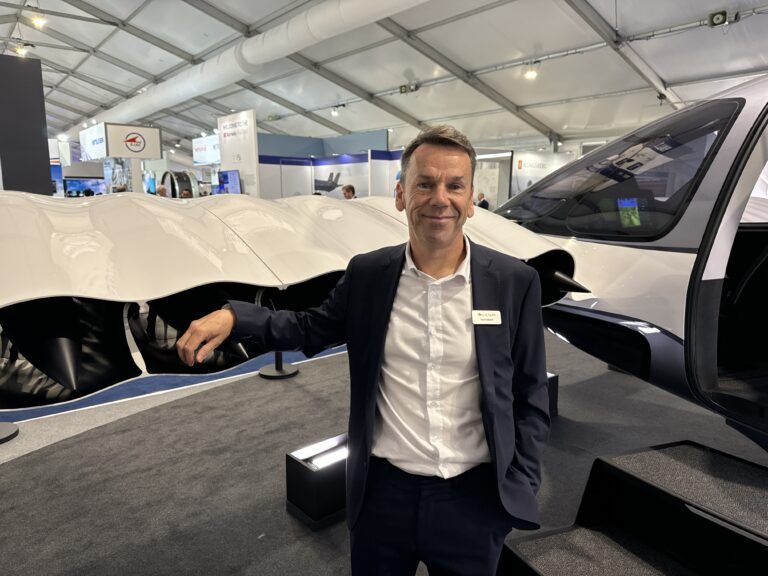Lilium’s chief technology officer on how its Jet eVTOL is progressing through testing.
What sets the Lilium Jet apart from other eVTOL aircraft?
Our aircraft is designed for regional mobility – flying between cities rather than just within them.
At the heart of our design is a distributed electric propulsion system that uses ducted fans integrated into the wing and canard surfaces, enabling vertical take-off and landing and efficient forward flight. The use of ducted fans instead of open rotors provides advantages in terms of noise reduction and safety.
Another of the most distinctive features of our aircraft is its flight control system.
How does the flight control system work?
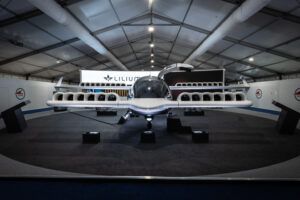
We’ve developed it from a clean-sheet design, which has allowed us to optimize it specifically for our configuration. It works by precisely controlling the thrust of each ducted fan and the angle of the flaps they are integrated into. By changing these parameters, we can control all aspects of the aircraft’s movement in any direction.
From the pilot’s perspective, the control scheme is like a helicopter’s. We have a control stick for vertical movement and a control stick for forward flight and roll. This familiarity should help ease the transition for pilots coming from conventional rotorcraft.
Our flight control system has several benefits. It simplifies the mechanical complexity of the aircraft – we don’t need separate control surfaces or complex mechanical linkages. It provides a high degree of redundancy and failure tolerance. With multiple ducted fans, we can lose several and still maintain controlled flight. Finally, it allows for very precise control, which is crucial for operations in confined spaces during take-off and landing.
Can you tell me about your approach to testing?
It’s different from what you might see at other eVTOL companies. While some of our competitors are flying multiple demonstrators or prototypes early in their programs, we’re taking a more methodical approach that we believe will pay dividends in the long run, particularly when it comes to certification.
Our strategy is focused on comprehensive ground testing and simulation before we move to flight testing. This allows us to validate our systems and identify potential issues early in the development process when they’re easier and less costly to address.
A key element is therefore our iron bird, which integrates all of the flight systems – propulsion, electrical, avionics, and flight controls. It allows us to conduct extensive integration testing in a controlled environment.
We have a strong emphasis on simulation and modeling and invested heavily in wind tunnel testing, including full-body tests at both low and high speeds. This data feeds into our aerodynamic models, which in turn inform our flight control laws and overall aircraft performance predictions.
When we start flight testing, we aim to fly a highly mature system. The approach might seem slower at first, but we believe it will accelerate our path to certification and commercial operations.
Can you outline the development timeline?
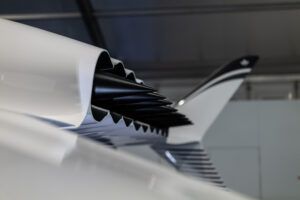
We have two aircraft in production. The first will be used as our iron bird. We expect to begin integration testing on this platform in autumn. This will be a major milestone because it will be the first time we bring together all of the aircraft’s systems in a fully integrated way.
Our second aircraft, MSN2, will be the first to fly. We are targeting early next year. We plan to begin production of our third aircraft later this year as well. There is perhaps a perception that we are behind the competition because they are flying. But our first flight will be manned, and we will get flight-conditions approval and a permit to fly from the regulator from the outset.
Our flight testing will contribute towards the certification program, while some other companies are flying demonstrators that are more similar to our Phoenix demonstrator aircraft that have done many remote controlled flights at our test center in Spain.
How is Lilium addressing the noise challenge of eVTOL?
Noise is one of our key design requirements along with range, payload, and turnaround time. We’re approaching noise reduction from several angles.
Ducted fans have an inherent noise advantage over open rotors. The engines are be tuned to ensure their topology is suitable for the best noise output. We’ve also incorporated acoustic liners into our ducts, three at different stages of the engine.
We’ve still got to measure it – a lot of our analysis is based on data from our Phoenix demonstrator, but we’re confident we can achieve noise levels that are compatible with urban and suburban environments, which is crucial for the widespread adoption of eVTOL technology.
Can you tell me more about your methodical approach?
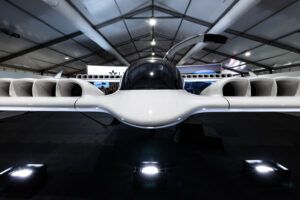
We’re following the ARP4754A standard, which is used in the aerospace industry for the development of highly integrated or complex aircraft systems.
This has a rigorous requirements management process. We start by defining top-level aircraft requirements including certification regulation, and then systematically flow these down to the system, subsystem, and component levels. This ensures that every part of the aircraft can be traced back to a high-level requirement, and that we don’t have any orphaned or unnecessary features.
We’re using these requirements not just for design, but also to define our test points. This creates a clear link between requirements, design, and verification activities. It allows us to ensure comprehensive coverage in our testing, from the unit level up to full aircraft integration.
The approach helps prevent design iterations by ensuring we’ve thought through all the requirements upfront, gives confidence that we’re meeting all necessary certification requirements and provides a clear framework for managing the complexity inherent in a novel aircraft design like ours.
We’ve applied this approach across all our systems, including the battery systems and electric propulsion components, areas where the aerospace industry is still developing best practices.
How is the electric propulsion system development progressing?
We’ve made the decision to keep much of this in-house. We have designed our own battery packs, engine control units, and servo control units.
This gives us more control over these critical systems and allows us to optimize them specifically for our aircraft. But it also means we’ve had to develop capabilities that are more typically associated with equipment manufacturers rather than aircraft OEMs.
It also means we do a lot more testing in house, like environmental testing on our battery packs and control units. This includes tests for vibration, temperature extremes and electromagnetic compatibility. We’ve invested significantly in test facilities to support this work.
On the propulsion side, we’re working closely with our engine supplier, Denso, but we’re doing the integration work ourselves. We’re also putting a lot of effort into battery management and thermal management. These are critical for ensuring safe and efficient operation, as well as for maximizing the lifespan of our battery systems.
How is Lilium managing recruitment and team building?
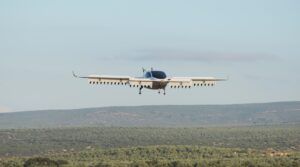
I believe we are great at that. Developing an aircraft like ours requires a diverse set of skills, some of which are in high demand across the industry. But our mission – to revolutionize regional air mobility – is a strong attractor for talent. Being in the testing phase is also exciting, especially for younger engineers. So we don’t have trouble recruiting.
Currently, we are focusing heavily on hiring test engineers. This reflects our current phase of development, where we’re transitioning from design to integration and testing. We’re always on the lookout for flight mechanics engineers, loads engineers, and electric propulsion specialists.
We’ve built a very international team, there are over 50 nationalities in our workforce and that diversity is an asset. What I find interesting is that people have come from a lot of different companies, and often they would say ‘at our company we did it this way’.
But now, after receiving our design organisation approval last November, and being so close to the first flight we have got a Lilium DNA. We have developed our own way of working and now I’m hearing that phrase less. It is now “at Lilium, we are doing it this way…”
What are you most looking forward to in the coming months?
I can’t wait for the first runs of the iron bird. All of the modern tools reduce the risk, but it will be the first time we put together the batteries, the propulsion system, the flight control system, and the avionics. We will get to see how well the aircraft has been integrated.
However, for all of us the first flight of the second prototype next year will be a huge milestone. First flights always give energy and enthusiasm, but for a company like Lilium, I think it will bring amazing momentum to what we are doing. It’s the hard yards at the moment, but you have just got to keep pushing through and the reward will be that first flight.


